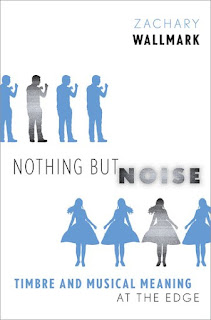New from Oxford University Press: Nothing but Noise: Timbre and Musical Meaning at the Edge by Zachary Wallmark.
About the book, from the publisher:
Nothing but Noise: Timbre and Musical Meaning at the Edge explores how timbre shapes musical affect and meaning. Integrating perspectives from musicology with the cognitive sciences, author Zachary Wallmark advances a novel model of timbre interpretation that takes into account the bodily, sensorimotor dynamics of sound production and perception. The contribution of timbre to musical experience is clearest in drastic situations where meaning is itself contested; that is, in polarizing contexts of reception where evaluation of "musical" timbre by some listeners collides headlong against a competing claim-that it is just "noise." Taking this ubiquitous moment as a starting point, the book explores affect, reception, and timbre semantics through diverse cultural-historical case studies that frustrate the acoustic and perceptual boundary between musical sound and noise.--Marshal Zeringue
Nothing but Noise includes chapters on the racial and gender politics in the reception of free jazz saxophone "screaming" in the late 1960s; an analysis of contested timbral ideals in the performance practices of the Japanese shakuhachi flute; and an historical examination of the overlooked role of "brutal" timbres in the moral panic over heavy metal in the eighties and nineties. The book closes with a discussion of the slippery social fault lines separating perceptions of musical sound from noise and the ethical stakes of encountering another's "aural face."






